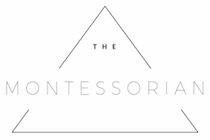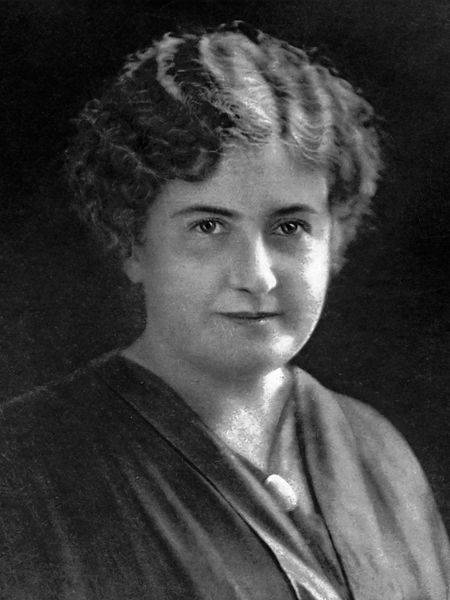At the beginning of her book The Montessori Method, Montessori overtly endeavours to dissociate her method from any prior philosophers (Gimbel & Emerson, 2009). However, various researchers over the years have identified several theorists, scientists and educators that seem to have influenced her works in some way. Of these theorists, Jean-Marc-Gaspard Itard and Edouard Séguin were probably the most significant (Gimbel & Emerson, 2009; Kramer, 1988; O’Donnell, 2007; Röhrs, 2000; Standing, 1957). Montessori’s work with the children with additional needs at the Psychiatric Clinic of the University of Rome inspired her to read comprehensively in that field, leading her to the work of Séguin and Itard (Gimbel & Emerson, 2009; O’Donnell, 2007). This research influenced her “… interest in the role of pedagogy as related to development” (Gimbel & Emerson, 2009, p. 40) and her work with student teachers at the State Orthophrenic School (Gimbel & Emerson, 2009). Röhrs (2000), O’Donnell (2007), and Standing (1957) all acknowledged that Montessori was particularly fascinated by Itard’s work. He was the first teacher to employ the same observational methods used in hospitals to observe the sick, and developed a range of educational approaches for the improvement of children’s senses (Montessori, 1912; O’Donnell, 2007). Both of these techniques can be seen in Montessori’s methods. Furthermore, both Itard and Montessori “… followed children’s natural tendencies” (O’Donnell, 2007, p. 4) rather than start with a theory. Based on this approach, individuals had detailed observations, notes and records kept of their progress in a secure, compassionate environment (O’Donnell, 2007). Moreover, in a turnaround of the established teacher-student relationship, the Montessori educator adjusted to each student and their needs to engender positive learning encounters (O’Donnell, 2007).
Itard’s pupil, Edouard Séguin was purported to be the second key influence on Montessori (O’Donnell, 2007; Röhrs, 2000; Standing, 1957). In actual fact, Röhrs (2000) stated that Montessori did not reveal where much of her inspiration came from, but in her writings examined in great detail her endeavors in understanding Séguin’s works. Séguin followed Comte Claude de Saint-Simon’s social theories and dream of a social reconstruction built around loving one another (O’Donnell, 2007). As such, he viewed education as the groundwork for a perfect society, where harmony and democracy would be achieved through each person’s active involvement in their own education, resulting in people who lived and worked together harmoniously (O’Donnell, 2007). Séguin saw education as being dependent on nature and nurture, where he advocated self-care and independence, individual experiences, and practical life activities, all of which are evident in Montessori’s methods (O’Donnell, 2007). Montessori (1912) also acknowledged Séguin’s influence in her ‘three period lesson.’ A significant aspect of Montessori’s programme, and where Séguin’s influence is evident, is that “… it gave equal emphasis to internal and external development, arranged so that they complemented one another” (Röhrs, 2000, p. 3). Such acknowledgement of the external educational factors is evidence of the scientific direction of Montessori’s works, and the effect of Séguin (as well as Pereira’s work on personality development through the senses) (Röhrs, 2000). Séguin’s influence is also apparent in Montessori’s didactic materials, which improved and developed children’s sensory functions (Montessori, 1912; O’Donnell, 2007; Röhrs, 2000). Montessori, Séguin, Itard, and Rousseau all believed that training of the senses was vital for each individual’s early education (O’Donnell, 2007).
O’Donnell (2007) argued that Montessori’s works were profoundly influenced by Jean-Jacques Rousseau. She asserted that much of Montessori’s writing was similar to Rousseau’s ideas, and her denunciations of aspects of the adult world displayed similarities to his outlook (O’Donnell, 2007). Furthermore, they held similar views on assisting those who could not help themselves as being a significant part of the development of moral individuals (O’Donnell, 2007). O’Donnell (2007) identified a correlation between Montessori’s detailed observations and Rousseau’s opinion that these were vital for educators as well. However, she also stated that Montessori never undertook a thorough study of Rousseau’s works and that there were not specific mentions of them in hers (O’Donnell, 2007).
Standing (1957), conversely, identified similarities between Montessori’s methods and Froebel’s. He believed that Montessori’s system was a “… natural development …” (Standing, 1957, p. 320) of Froebel’s, in terms of pedagogy and philosophy. Both Montessori and Froebel created specially designed materials for teaching through self-activity, but did so for different reasons—Froebel from the position of metaphysics and theology, and Montessori from that of psychology and physiology (Standing, 1957). Both viewed children as explorers of life where the adult needs to assist them in their research, and consequently had similar opinions on “… useless aid …” (Standing, 1957, p. 323) by adults in its hindrance to children’s learning. Montessori and Froebel were aware of sensitive periods or budding points in children’s development, with the development of the child as “… a series of metamorphoses” (Standing, 1957, p. 324). Standing (1957) believed that there was a likeness between the essences of Montessori and Froebel, but also identified differences in practice and theory. He goes on to discuss areas of dissimilarity between the two, such as their views on spontaneity, fairy tales, play versus work, and imagination versus reality (Standing, 1957). Standing (1957, p. 330) finished by stating that both Montessori and Froebel were idealists in that they associated “… their educational aims to ultimate religious values.”
The idealistic principles mentioned by Standing (1957) in relation to Montessori and Froebel were also articulated by Gimbel and Emerson (2009) regarding Georg Wilhelm Friedrich Hegel’s influence on Montessori’s works. Gimbel and Emerson (2009) suggested that aspects of the Naturphilosophie movement (specifically that of Hegel’s work) are apparent in Montessori’s scientific worldview. They alleged that Montessori and Hegel used the same fundamental terminology and tracked the same progression of human development (Gimbel & Emerson, 2009). This progression, along with the idea of a guiding spirit, is also evident in the writings of Herder, Caspar Wolff, and Ernst von Baer, with the latter’s work described in detail in The Absorbent Mind (Gimbel & Emerson, 2009). Montessori believed that the idea of a guiding spirit is an essential theory in grasping the disposition of humanity, which correlates with the theories of the Naturphilosophie scientists (Gimbel & Emerson, 2009; Montessori, 2012). However, Gimbel and Emerson (2009) also recognised that a significant difference between Hegel and Montessori was that Montessori argued that nature is made up of scientific, ‘real’ things, whereas Hegel was a pure idealist. They contend that Montessori’s view is in line with that of “… Antonio Labriola, a neo-Hegelian Marxist philosopher at the University of Rome when Montessori studied philosophy there” (Gimbel & Emerson, 2009, p. 40). Gimbel and Emerson (2009, p. 40) suggested that Montessori was introduced to Hegel’s The Phenomenology of Spirit during that time, influencing her understandings of “pedagogical methodology.”
Röhrs (2000), on the other hand, stated that there were strong similarities between Montessori’s methods and that of other educators in the New Education Movement. However, he also noted that her viewpoint on the other educators’ works is somewhat unknown (Röhrs, 2000). Like Decroly, Dewey, Ferrière and Kilpatrick, Montessori believed it was essential to use the child’s interests and prior knowledge as the “starting-point” (Röhrs, 2000, p. 4) of education, with activities to develop these interests and knowledge, and stimulate senses of self-discipline and responsibility. Nevertheless, a collaboration between Montessori and the New Education educators never occurred (Röhrs, 2000). In fact, Röhrs (2000) asserted that the only ones she mentioned in her works were Carleton Wolsey Washburne and Percy Nunn. Nunn’s theories about mneme and hormic theory, influenced her understanding of “… the constructive function of the developing human mind,” (Röhrs, 2000, p. 3) evident in her notion of the “absorbent mind” (Montessori, 2012). According to O’Donnell (2007) and Röhrs (2000), there are other theorists and educators with similarities to Montessori that possibly had an influence on her, including Decroly, the Agazzi sisters, Sergi, and Diderot. Furthermore, O’Donnell (2007) indicated that other prominent influences included Pestalozzi (also mentioned by Röhrs (2000)), Locke, and Owen. However, the evidence around these possible influences is less detailed than about those previously discussed.
Summary of Parts 1 and 2
As described in this post and the first part of this series, Maria Montessori was inspired and influenced by the people, events, and stimulating moments she encountered and experienced throughout her personal and professional life. Real life incidents had a much more significant impact on her work and her soul than any established theories could have done (Röhrs, 2000). Her early life experiences and relationship with her parents set her on her destined path, with her educational and cultural struggles over her lifetime contributing to her passion for social justice and a strong-willed ambition to follow what she believed in. Some called her a social reformer where her scientific and faith-based understandings of education led to “… a remodelling and renewal of life” for many (Röhrs, 2000, p. 3). Her approach and her personality (so unusual in Italian society at the time), garnered much interest and attention, but it was her inspirational delivery of her unique combination of theory and practice, verbally and in written form, that led to such prodigious admiration throughout the world and across generations:
She looked for the confirmation of her theories in practice and shaped her practice according to scientific principles, thus achieving perfection: that is why Maria Montessori’s educational concept has been so successful. (Röhrs, 2000, p. 10)
Reference List
Gimbel, S., & Emerson, A. (2009). Montessori and the Uncited Influence of Hegel. Communications.
Kramer, R. (1988). Maria Montessori: A Biography. Chicago: Da Capo Press.
Montessori, M. (1912). The Montessori Method. English (American E.). Radford: Wilder Publications.
Montessori, M. (2012). The Absorbent Mind. California: BN Publishing.
O’Donnell, M. (2007). Maria Montessori. (R. Bailey, Ed.). London: Bloomsbury Academic.
Röhrs, H. (2000). Maria Montessori (1870-1952), XXIV(1), 1–12.
Standing, E. M. (1957). Maria Montessori: Her Life and Work. New York: Plume.





